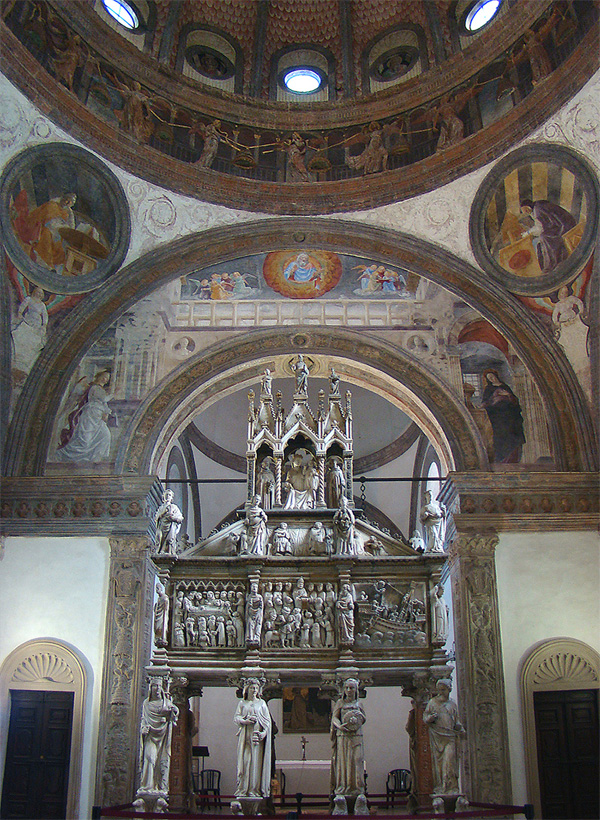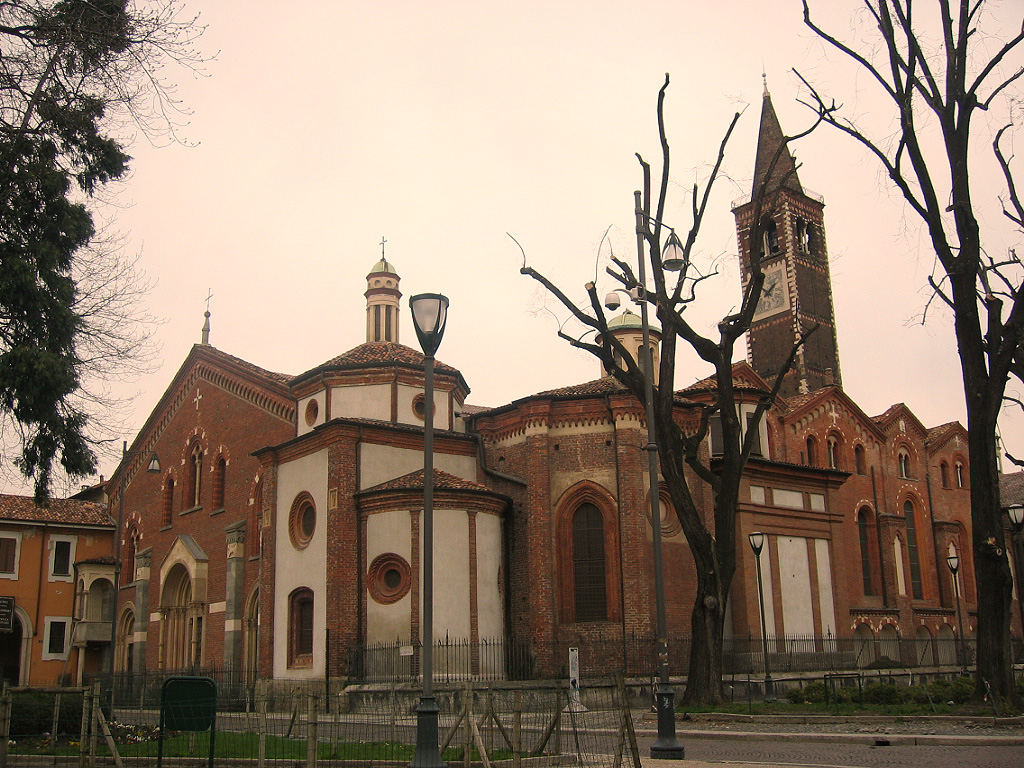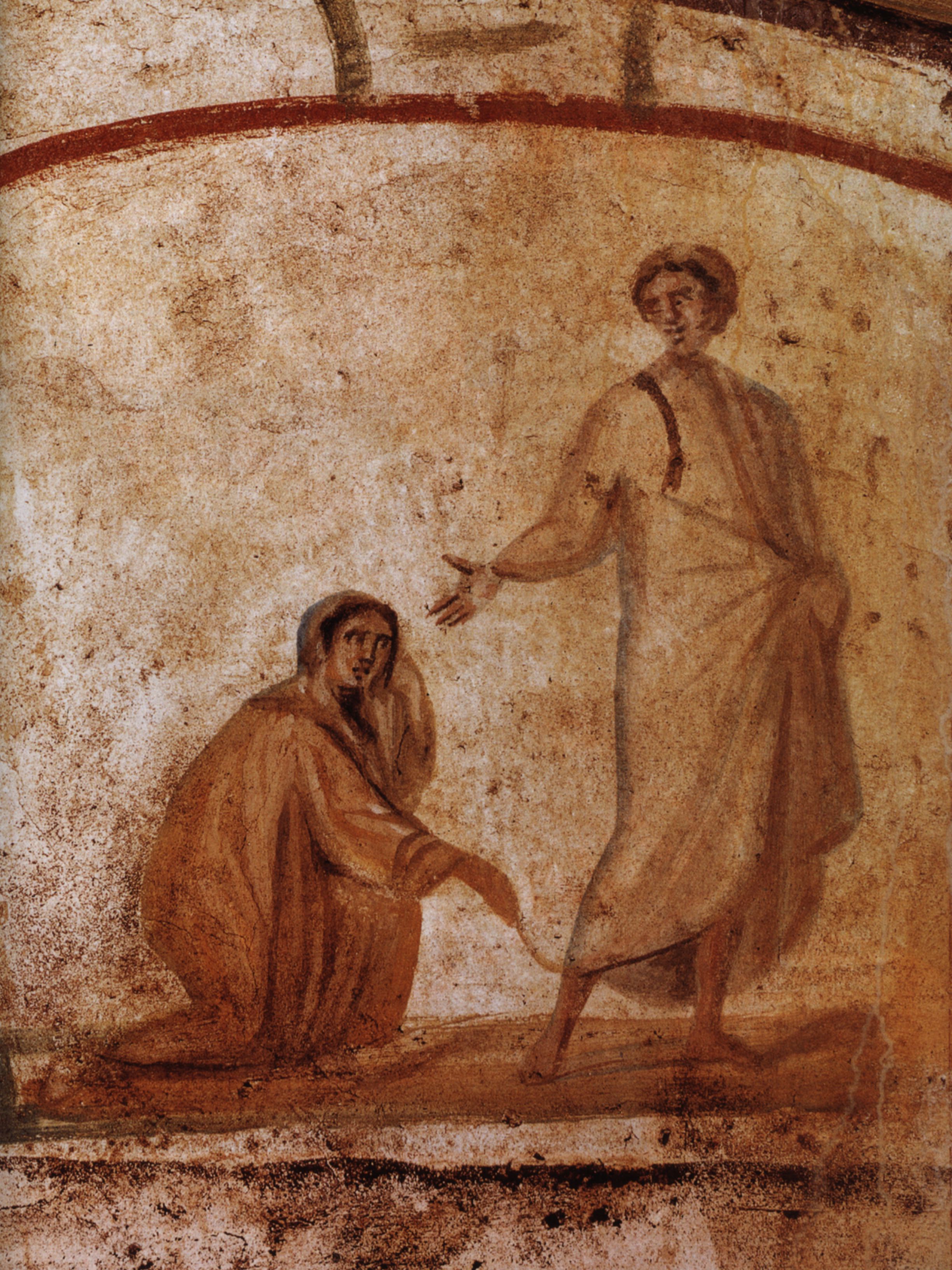|
Sant'Eustorgio
The Basilica of Sant'Eustorgio is a church in Milan in northern Italy, which is in the Basilicas Park city park. It was for many years an important stop for pilgrims on their journey to Rome or to the Holy Land, because it was said to contain the tomb of the Three Magi or ''Three Kings''. Probably founded in the 4th century, its name refers to Eustorgius I, the bishop of Milan to whom is attributed the translation of the supposed relics of the Magi to the city from Constantinople in 344. In 1764, when an ancient pillar was removed, a Christian burial was discovered, housing coins of emperor Constans, the son of Constantine the Great. The church was later rebuilt in Romanesque style. In the 12th century, when Milan was sacked by Frederick Barbarossa, the relics of the Magi were appropriated and subsequently taken to Cologne. It was only in 1903/4 that fragments of the bones and garments were sent back to Sant'Eustorgio's. Nowadays they are in the Three Kings altar nearby the e ... [...More Info...] [...Related Items...] OR: [Wikipedia] [Google] [Baidu] |
Eustorgius I
Eustorgius I ( it, Eustorgio) was bishop of Milan from 343 to about 349. He is honoured as a Saint in both the Catholic Church and the Eastern Orthodox Church. His feast day is on the September 18. Life According to the tradition, Eustorgius was a noble Greek. He was the legate of Milan and he was elected as bishop at the death of Protasius in 343. Eustorgius traveled to Constantinople to have his election as bishop confirmed by the Emperor, and in that occasion Emperor donated to him the relics of the Three Magi which he translated from Constantinople to Milan. From 345 to 346 and from 347 to 348, he held two synods. He also began construction of churches and basilicas in Milan. Saint Athanasius called him a "defender of the faith" and mentions him as an opponent of Arianism. Saint Ambrose called him by the honorable title of "confessor", and just in such a way some verses concerning Milan in ca. 700. His name was included in the Ambrosian Rite and his cult in Milan is testif ... [...More Info...] [...Related Items...] OR: [Wikipedia] [Google] [Baidu] |
Milan
Milan ( , , Lombard: ; it, Milano ) is a city in northern Italy, capital of Lombardy, and the second-most populous city proper in Italy after Rome. The city proper has a population of about 1.4 million, while its metropolitan city has 3.26 million inhabitants. Its continuously built-up urban area (whose outer suburbs extend well beyond the boundaries of the administrative metropolitan city and even stretch into the nearby country of Switzerland) is the fourth largest in the EU with 5.27 million inhabitants. According to national sources, the population within the wider Milan metropolitan area (also known as Greater Milan), is estimated between 8.2 million and 12.5 million making it by far the largest metropolitan area in Italy and one of the largest in the EU.* * * * Milan is considered a leading alpha global city, with strengths in the fields of art, chemicals, commerce, design, education, entertainment, fashion, finance, healthcar ... [...More Info...] [...Related Items...] OR: [Wikipedia] [Google] [Baidu] |
Lombardia Milano4 Tango7174
(man), (woman) lmo, lumbard, links=no (man), (woman) , population_note = , population_blank1_title = , population_blank1 = , demographics_type1 = , demographics1_footnotes = , demographics1_title1 = , demographics1_info1 = , demographics1_title2 = , demographics1_info2 = , demographics1_title3 = , demographics1_info3 = , timezone1 = CET , utc_offset1 = +1 , timezone1_DST = CEST , utc_offset1_DST = +2 , postal_code_type = , postal_code = , area_code_type = ISO 3166 code , area_code = IT-25 , blank_name_sec1 = GDP (PPS) , blank_info_sec1 = €401 billion (2019) , blank1_name_sec1 = GDP per capita , blank1_info_sec1 = €39,700 (2019) $51,666 (2016) (PPP) , blank2_name_sec1 = HDI (2019) , blank2_info_sec1 = 0.912 · 4th of 21 , blank_name_sec ... [...More Info...] [...Related Items...] OR: [Wikipedia] [Google] [Baidu] |
Frederick Barbarossa
Frederick Barbarossa (December 1122 – 10 June 1190), also known as Frederick I (german: link=no, Friedrich I, it, Federico I), was the Holy Roman Emperor from 1155 until his death 35 years later. He was elected King of Germany in Frankfurt on 4 March 1152 and crowned in Aachen on 9 March 1152. He was crowned King of Italy on 24 April 1155 in Pavia and emperor by Pope Adrian IV on 18 June 1155 in Rome. Two years later, the term ' ("holy") first appeared in a document in connection with his empire. He was later formally crowned King of Burgundy, at Arles on 30 June 1178. He was named by the northern Italian cities which he attempted to rule: Barbarossa means "red beard" in Italian; in German, he was known as ', which means "Emperor Redbeard" in English. The prevalence of the Italian nickname, even in later German usage, reflects the centrality of the Italian campaigns to his career. Frederick was by inheritance Duke of Swabia (1147–1152, as Frederick III) before his i ... [...More Info...] [...Related Items...] OR: [Wikipedia] [Google] [Baidu] |
Basilicas Park
Parco Papa Giovanni Paolo II ("Pope John Paul II Park"),Parco Papa Paolo Giovanni II, ex Parco delle Basiliche (official site of the Comune of Milan) best known by its historic name Basilicas Park (Parco delle Basiliche in Italian language, Italian) is a city park of Milan, Italy, located in Zone 1 of Milan, Zone 1. It owes its name to the fact that it connects two major basilicas, the Basilica of San Lorenzo, Milan, Basilica of San Lorenzo and the Basilica of Sant'Eustorgio. The park has an ove ... [...More Info...] [...Related Items...] OR: [Wikipedia] [Google] [Baidu] |
Triptych
A triptych ( ; from the Greek language, Greek adjective ''τρίπτυχον'' "''triptukhon''" ("three-fold"), from ''tri'', i.e., "three" and ''ptysso'', i.e., "to fold" or ''ptyx'', i.e., "fold") is a work of art (usually a panel painting) that is divided into three sections, or three Wood carving, carved panels that are hinged together and can be folded shut or displayed open. It is therefore a type of polyptych, the term for all multi-panel works. The middle panel is typically the largest and it is flanked by two smaller related works, although there are triptychs of equal-sized panels. The form can also be used for pendant jewelry. Beyond its association with art, the term is sometimes used more generally to connote anything with three parts, particularly if integrated into a single unit. In art The triptych form appears in early Christian art, and was a popular standard format for altar paintings from the Middle Ages onwards. Its geographical range was from the easter ... [...More Info...] [...Related Items...] OR: [Wikipedia] [Google] [Baidu] |
Ambrogio Bergognone
Ambrogio Borgognone (variously known as ''Ambrogio da Fossano'', ''Ambrogio di Stefano da Fossano'', ''Ambrogio Stefani da Fossano'' or as ''il Bergognone'' or ''Ambrogio Egogni'' By Gottardo Garollo, 1907, page 727. s1523/1524) was an Italian painter of the period active in and near . Biography While he was nearly contemporary with , he painted in a style more akin to the pre-Renaissance, Lomb ...[...More Info...] [...Related Items...] OR: [Wikipedia] [Google] [Baidu] |
Early Christian Architecture
Early Christian art and architecture or Paleochristian art is the art produced by Christians or under Christian patronage from the earliest period of Christianity to, depending on the definition used, sometime between 260 and 525. In practice, identifiably Christian art only survives from the 2nd century onwards. After 550 at the latest, Christian art is classified as Byzantine, or of some other regional type. It is hard to know when distinctly Christian art began. Prior to 100, Christians may have been constrained by their position as a persecuted group from producing durable works of art. Since Christianity was largely a religion not well represented in the public sphere, the lack of surviving art may reflect a lack of funds for patronage, and simply small numbers of followers. The Old Testament restrictions against the production of graven (an idol or fetish carved in wood or stone) images (see also Idolatry and Christianity) may also have constrained Christians from producing ... [...More Info...] [...Related Items...] OR: [Wikipedia] [Google] [Baidu] |
Constantine I
Constantine I ( , ; la, Flavius Valerius Constantinus, ; ; 27 February 22 May 337), also known as Constantine the Great, was Roman emperor from AD 306 to 337, the first one to convert to Christianity. Born in Naissus, Dacia Mediterranea (now Niš, Serbia), he was the son of Flavius Constantius, a Roman army officer of Illyrian origin who had been one of the four rulers of the Tetrarchy. His mother, Helena, was a Greek Christian of low birth. Later canonized as a saint, she is traditionally attributed with the conversion of her son. Constantine served with distinction under the Roman emperors Diocletian and Galerius. He began his career by campaigning in the eastern provinces (against the Persians) before being recalled in the west (in AD 305) to fight alongside his father in Britain. After his father's death in 306, Constantine became emperor. He was acclaimed by his army at Eboracum (York, England), and eventually emerged victorious in the civil wars against emperors ... [...More Info...] [...Related Items...] OR: [Wikipedia] [Google] [Baidu] |




_MET_DP273206.jpg)

